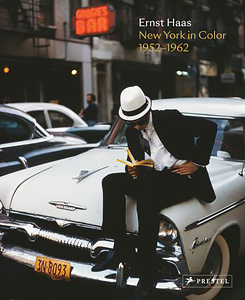Photo Corners headlinesarchivemikepasini.com
![]()
A S C R A P B O O K O F S O L U T I O N S F O R T H E P H O T O G R A P H E R
![]()
Enhancing the enjoyment of taking pictures with news that matters, features that entertain and images that delight. Published frequently.
Book Bag: Ernst Haas: New York in Color, 1952-1962



14 December 2020
In the foreward to this colorful love letter to New York City (and color photography for that matter), Ernst Haas's son Alex tells a story that you can't hear too many times.

The two of them had gone out one night in the 1970s because Ernst wanted to photograph in the neighborhood and needed his son's help as an assistant.
They set up his Leica for a shot and quickly drew the attention of some guys "who seemed very interested in the equipment."
Alex understood the situation. But Ernst was focused on the shot. Alex tells what happened:
Upon seeing them, my father -- without hesitation or understanding the gravity of the situation -- asked one of them to look through the viewfinder, explaining the technical aspects of what he was doing. He then invited the next one to take a look, and so on. Eventually, they walked away.
That's the New York City Haas loved.
As Phillip Prodger puts it in his opening essay, "Many of the photographs in this volume reveal moments where reality and expectation do not quite meet -- the cab of a disused truck crowning a junk pile or a rusty old sign, for example. Yet all are vividly alive."
Prodger points out that in the 1950s and 1960s when Haas was among the few experimenting with color photography, it was used in commercial photography and for snapshots but color TV did not yet exist. It was still novel.
MoMA's 1962 exhibit Ernst Haas: Color Photography, the last curated by Edward Steichen, was actually the first put on by John Szarkowski. Szarkowski wrote:
The color in color photography has often seemed an irrelevant decorative screen between the viewer and the fact of the picture. Ernst Haas resolved this conflict by making the color sensation itself the subject matter of the work.
Indeed, as we flipped through the pages of this gorgeous book, we couldn't imagine even a single image without its color. This was especially true of the nearly monochromatic images (of which there are a few) where the color is subtle but carries the image.
We put the book down with the feeling that if tonality were the music of photography, color was its poetry. And Haas its poet laureate.
Ernst Haas: New York in Color, 1952-1962 by Phillip Prodger, published by Prestel, 208 pages, $45 (or $28.49 at amazon.com).